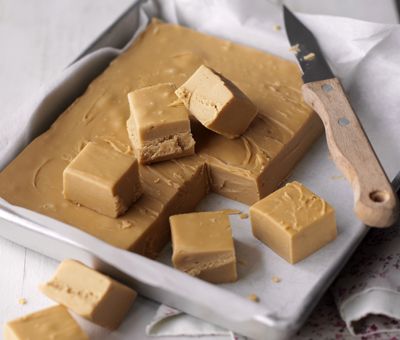History of Fudge
The most convinsing claim of fudge origins lies in a letter from 1886 written by Emelyn Battersby Hartridge, a student at Vassar College in New York. Before that time the origin of fudge is unclear. In this letter Emelyn wrote that her schoolmate’s cousin had been trying to make carmel but the temperature of the concoction was not taken high enough so it failed. The name fudge is believed to come from this accidental fudged batch of caramels but it´s meaning indicates a mistake or error.
Realising that here mistake tasted really well she started selling the so called fudge in a grocery store in Boltemore in 1886 for 40 cents a pound and it´s popularity has been growing ever since.
Fudge Recipe
Ingredients
- 397g can Carnation Cndensed Milk
- 150 ml milk
- 450 gr demerara sugar
- 115 gr butter
Instructions
To begin with, prepare a 20 cm square tin with a baking sheet.
Place the ingredients into a large non-stick deep cooking pan and melt over a low heat, stirring until the sugar dissolves.
Bring the mixture to boil and let it simmer for 10-15 minutes. Stir continuously and make sure to scrap the base of the pan. If you want to customise the recipe you can add nuts, fruit or chocolate chips to the mixture at this point.
To see if the mixture is ready a soft ball of fudge should form when you drop a little of the mixture into a cup of ice-cold water. You can also check if it´s ready with a sugar thermometer but the fudge should be approximately 118°C. When ready remove the fudge from the heat and stir it for about 10 minutes until it’s very thick and starting to set.
Pour the mixture into the prepared tin and leave to cool before cutting it into squares.
